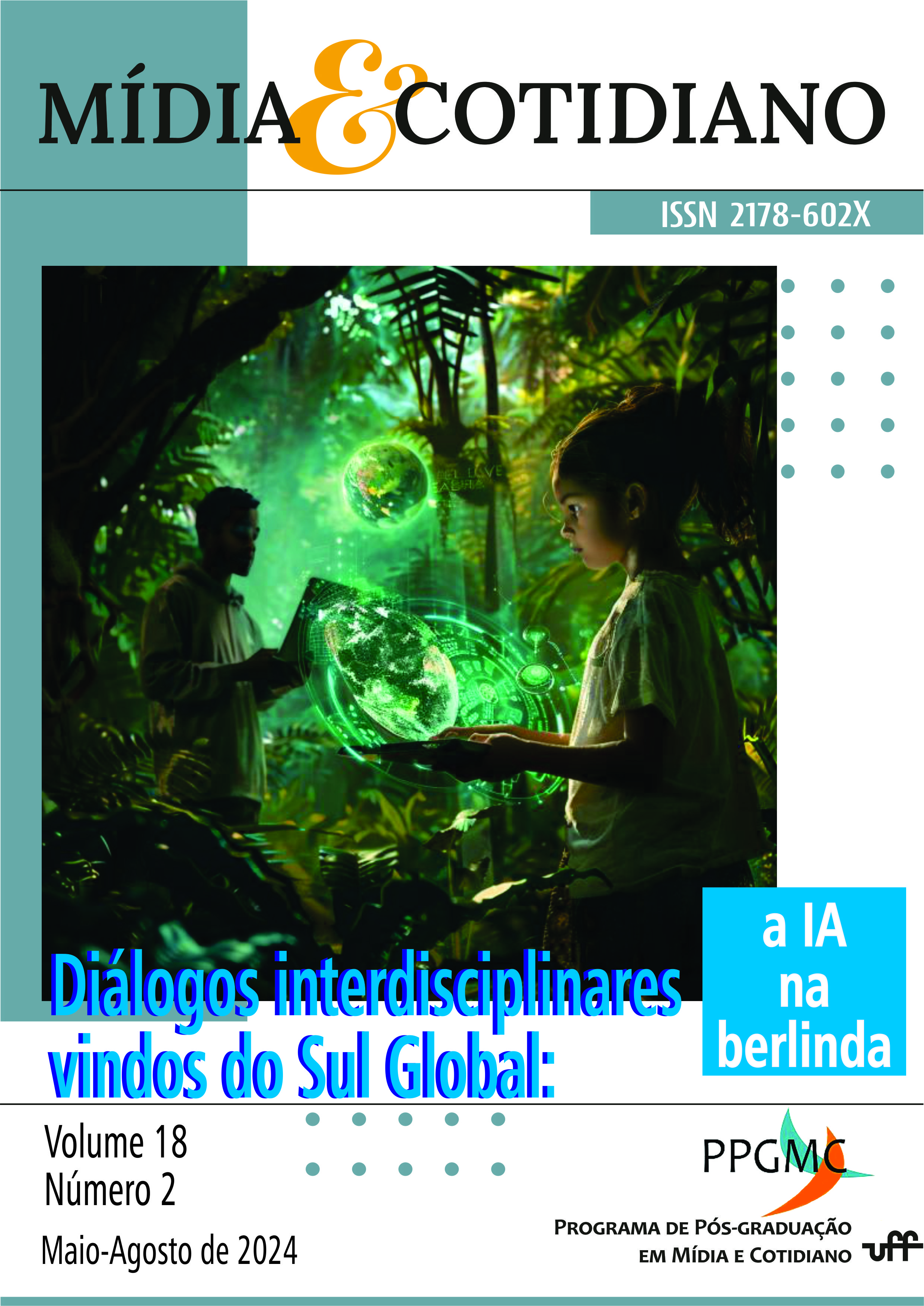Tangible Interfaces and Artificial Intelligence: Exploring Human Machine Interaction
DOI:
https://doi.org/10.22409/rmc.v18i2.62528Keywords:
Interaction Design, Artificial Intelligence, Tangible Interfaces, Speculative Design, Ubiquitous ComputingAbstract
This investigation proposes to observe tangible interfaces (TUIs) through Artificial Intelligence (AI) platforms that, today, play an essential role in the interaction between humans and machines. These are digital means of generating information, communication and interaction that develop together with AIs. These interfaces act as a connection point between users and the media, sending and receiving data and information that enable the visualization of the results generated by the AI algorithms. Taking into account the aesthetics of interaction, the characteristics of the tangible interfaces that constitute AIs will be analyzed and, when contemplating issues such as speculative, responsive and adaptive design and ubiquitous interactions, they adapt to users' preferences and needs.
Downloads
References
BIRD, S. (et al.). Exploring or Exploiting? Social and Ethical Implications of Autonomous Experimentation in AI, (October 2, 2016). Workshop on Fairness, Accountability, and Transparency in Machine Learning, 2016.
CALDAS V. B. The Bartleby Machine: exploring creative disobedience in computers. Artnodes, n. 32, pp. 1-10, 2023.
CARMO, R. O. e SAMPAIO, C. P. O avanço da inteligência artificial e o impacto nas interfaces de dispositivos móveis. Em Projética. Londrina: v. 13, n. 2, pp. 277-303, 2022. Disponível em https://ojs.uel.br/revistas/uel/index.php/projetica/article/view/42483/48131. Acesso em 15 fev. 2024.
DIAKOPOULOS, N. Algorithmic accountability: Journalistic investigation of computational power structures. Digital Journalism, n.3, pp.398-415, 2015.
DIAMOND, S.; JOFRE, A. e SZIGETI, S. Transdisciplinarity: Projects, Materials, and Processes. Em DATJournal: Design Art and Technology. São Paulo: Universidade Anhembi Morumbi, v.1 n.2 2016, p.3.
DUNNE, A. e RABY, F. Speculative Everything: Design, fiction and social dreaming. Cambridge: MIT Press, 2013.
ELGAMMAL, A.; MAZZONE, M. Artists, Artificial Intelligence and Machine-based Creativity in Playform. Artnodes, n. 26, pp. 1-8, 2020.
EUBANKS, V. Automating Inequality: How High-Tech Tools Profile, Police, and Punish the Poor. St. Martin’s Press. 2018.
HILDEBRAND, H. R. e OLIVEIRA, A. M. Objetos artísticos digitais diante dos processos de mediação e interação. Em DATJournal: Design Art and Technology. São Paulo: Universidade Anhembi Morumbi, v. 8, n. 3, 2023. p. 124.
HUHTAMO, E. The self-driving car: a media machine for posthumans? Artnodes, n.26, p. 1-14, 2020.
ISHII, Hiroshi; ULLMER, Brygg. Emerging Frameworks for Tangible User Interfaces. In: CARROLL, John (Ed.). Human-Computer Interaction in the New Millenium. Indianapolis: Addison-Wesley, pp. 579-601, 2001.
KIRSH, D. e MAGLIO, P. On distinguishing epistemic from pragmatic action. Cognitive Science, v. 18, n. 4, pp. 513–549, 1994.
LESLIE, David. Understanding Artificial Intelligence Ethics and Safety: A Guide for the Responsible Design and Implementation of AI Systems in the Public Sector, June 10, 2019. Disponível em: https://ssrn.com/abstract=3403301 or http://dx.doi.org/10.2139/ssrn.3403301. Acesso em: 03 mar. 2024.
MAES, P. Modulação de sinais interoceptivos para influenciar a experiência consciente. Boston: MIT, 2023. Disponível em https://www.media.mit.edu/publications/modulating-interoceptive-signals-for-influencing the-conscious-experience/. Acesso em 13 fev. 2024.
PORTELA, G. B. e HILDEBRAND, H. R. Objetos conectados: Design especulativo e experiência em interfaces tangíveis espaciais, construtivas e relacionais. Em Revista de Estudos em Design (oline). Rio de Janeiro: v. 32, n.1, 2024.
SIMONDON, G. Du mode d'existence des objets techniques. Paris: Aubier, 2008.
TANENBAUM, J. (et al.) Interactive Storytelling. Proceedings 4th International Conference on Interactive Digital Storytelling. Vancouver, Canada: Springer, Nov 28 1, 2011.
WEISER, M. The Computer of the 21st Century. Indianapolis: New Riders, 2006.
WIGDOR, D. e WIXON, D. B. NUI. World designing natural user interfaces for touch and gesture. Morgan Kaufmann, 1ª Edição, e-Book Kindle, 2011.
Downloads
Published
How to Cite
Issue
Section
License
Aviso de Direito Autoral Creative Commons
1. Política para Periódicos de Acesso Livre
Autores que publicam nesta revista concordam com os seguintes termos:- Autores mantém os direitos autorais e concedem à revista o direito de primeira publicação, com o trabalho simultaneamente licenciado sob a Licença Creative Commons Attribution que permite o compartilhamento do trabalho com reconhecimento da autoria e publicação inicial nesta revista.
- Autores têm autorização para assumir contratos adicionais separadamente, para distribuição não-exclusiva da versão do trabalho publicada nesta revista (ex.: publicar em repositório institucional ou como capítulo de livro), com reconhecimento de autoria e publicação inicial nesta revista.
- Autores têm permissão e são estimulados a publicar e distribuir seu trabalho online (ex.: em repositórios institucionais ou na sua página pessoal) a qualquer ponto antes ou durante o processo editorial, já que isso pode gerar alterações produtivas, bem como aumentar o impacto e a citação do trabalho publicado (Veja O Efeito do Acesso Livre).


